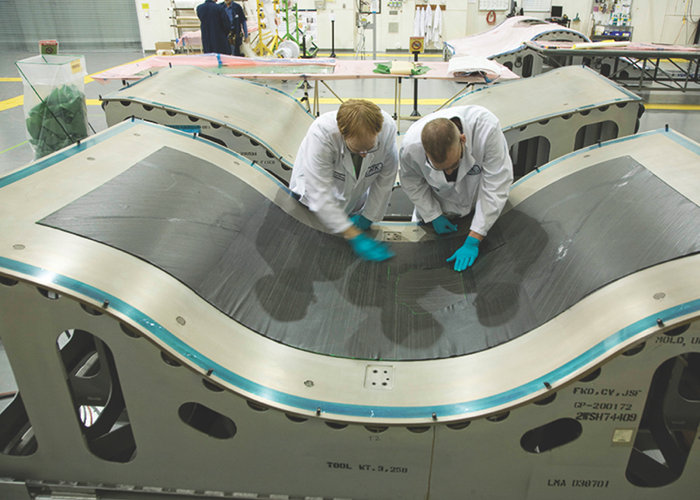The 110 companies and 34,000 workers in Utah’s aerospace industry soon will have a common voice.
The 110 companies and 34,000 workers in Utah’s aerospace industry soon will have a common voice.
State government and industry officials recently formed the Utah chapter of the Aerospace States Association, aimed at advocating state-based initiatives to strengthen national leadership in aviation and aerospace.
“It’s a way for companies to work together with state government and others interested in this industry to make sure that we find the best opportunities, to make sure that we have an educated workforce, to make sure that we have STEM education in our schools and that economic development is happening here in our state like it is in some other states,” Lt. Gov. Spencer Cox said after a chapter-announcement ceremony at the state Capitol.
Cox will serve as chairman of the Utah chapter of the association, a non-partisan organization consisting of members of the aerospace industry, lieutenant governors and governor-appointed delegates. Members of the Utah advisory board have not yet been selected.
“This is a really big deal for us — something that has been happening in other states and now Utah has its own chapter,” Cox said.
Cox said much of the industry’s innovation is happening at the state level, which he described as laboratories that are “actually accomplishing great things.”
Utah companies have been involved in launching rockets into space, developing communications systems, developing unmanned aerial systems and building components used in various vehicles. Val Hale, executive director of the Governor’s Office of Economic Development, said the industry last year accounted for 34,000 jobs at 110 companies, and F-35 aircraft development will bring about 2,000 more jobs to the state. And those jobs are high-paying, with the average wages in the aerospace industry in Utah being twice the state’s average wage, he said.
“We’re very pleased with our aerospace industry,” Hale said. “It continues to reach new heights.”
As a way to address industry workforce needs, industry leaders, government officials and education representatives last year created the Utah Aerospace Pathways program, which allows high school students to graduate with a certificate in aerospace manufacturing.
Cox said the new chapter, and the Pathways program, are ways to help Utah compete with other states, which includes having an educated workforce that begins with high school and college students being both interested and capable. “This is a problem nationwide,” he said. “It’s hard to find people that have the education to work in these jobs.”
Among activities at the Capitol were L-3, IMSAR and SilverHawk Aerial Imaging conducting demonstrations of manned and unmanned aerial systems in various locations across the state. For example, drones provided live images of Memory Grove and other sites in Utah.
Cox said issues regarding the use and regulation of drones are among the reasons the Utah chapter is being formed.
“We’re fortunate here in Utah. We have a lot of opportunities for drone development,” he said. “There’s a lot of misinformation out there about what drones can do. They’re critically important for the agriculture industry, which a lot of people don’t realize, so Utah State [University] is very involved with their drone program and their tie to agriculture. We have air space that isn’t congested here, [and] we have a lot of wide open spaces, so it’s a perfect place for us to be able to test some of these technologies.”
While several bills in the Utah Legislature’s general sessions relate to drone use, Cox said the chapter will “think more long-term” about legislation, while understanding that the federal government also is going to be involved. “We’re anxious to just make sure we have the right policies in place to allow this industry to thrive,” he said.
Read more:The Enterprise - Aerospace companies unite to strengthen industry in Utah








